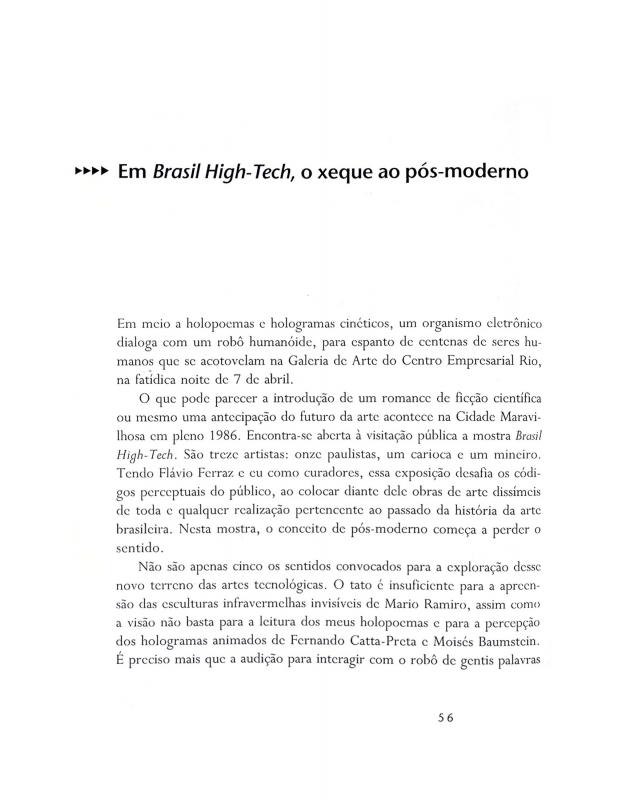Rio de Janeiro-based artist Eduardo Kac (b. 1962) emerged on the art scene at the heart of what is called the “Geração 80,” a movement characterized by a return to painting, which had become largely obsolete at the time. He is indisputably one of the most internationally recognized Brazilian artists working in the field of electronic art. He is a research pioneer in developing a dialogue between technology and art, and his work was also a precursor in transgenic art and what is called “telepresence” (in the work Ornitorrinco, 1989). Since 1995, articles documenting the development of these ideas have been published in the journal Leonardo. Kac, who moved to the United States in 1989, is currently a professor in the Art and Technology Studies program at the Art Institute of Chicago. In the show Ars Electronica (Linz, Austria, 1999), he created a synthetic “artist’s gene” based on a verse in English from the Old Testament translated into Morse code to be used as the DNA.
For other relevant essays by Kac on this topics, see “Origem e desenvolvimento da arte robótica” [doc. no. 1111127], “Em Brasil High Tech, o xeque ao pós-modernismo” [doc. no. 1111320], the polemical “GFP Bunny” [doc. no. 782231], “Microponto, microficha, videodisco: a arte high-tech em espaço microscópico” [doc. no. 1110966], and “As três dimensões do signo verbal” [doc. no. 1111228].





